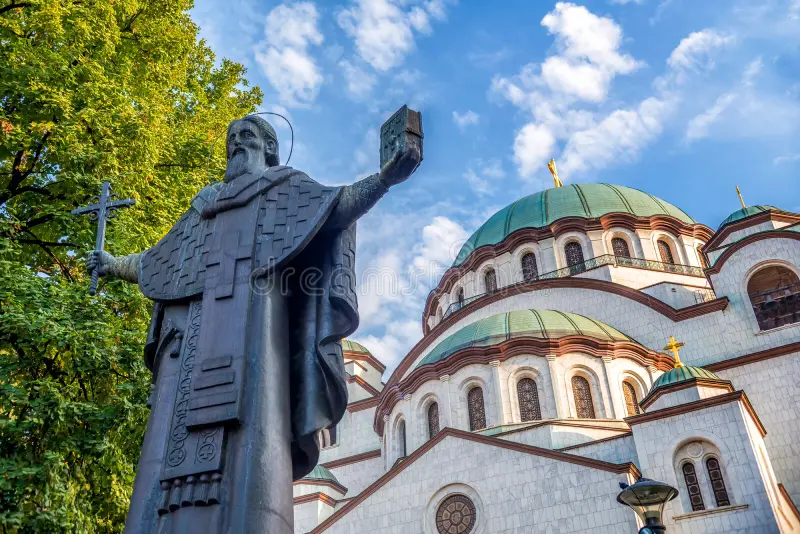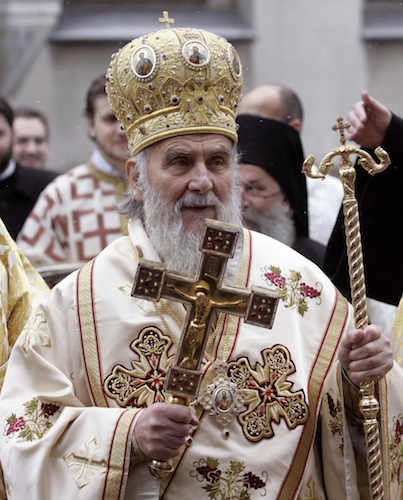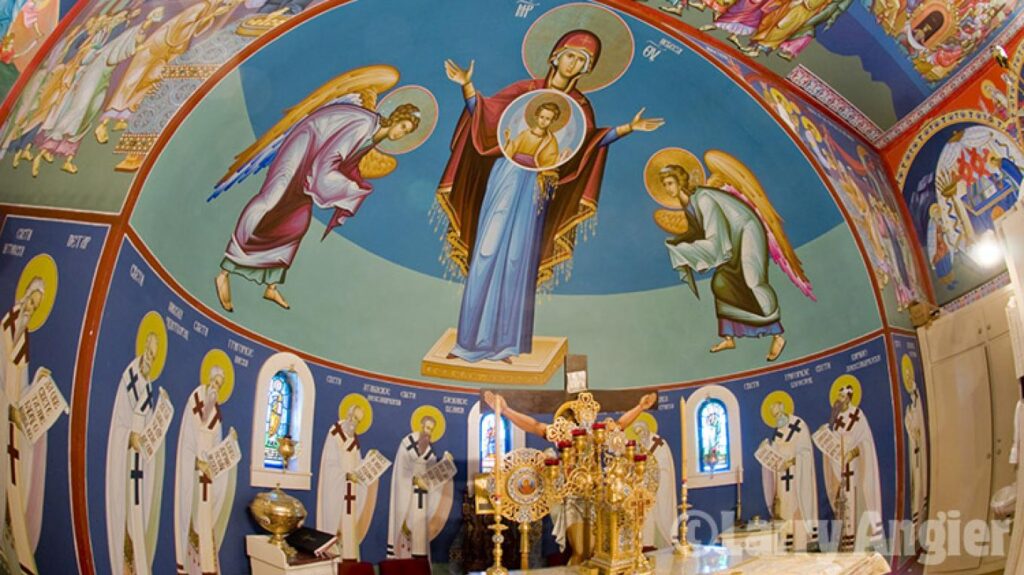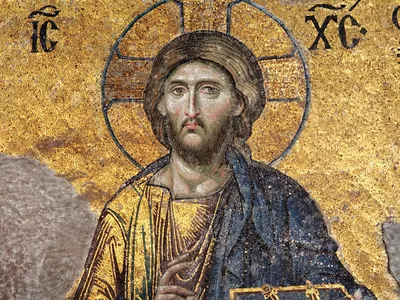Despite its ancient roots and rich spiritual tradition, Orthodox Christianity remains largely unknown — or misunderstood — by many in America today. Even among fellow Christians, misconceptions abound about what the Orthodox Church is, what it teaches, and how it differs from other branches of Christianity.
In this post, we’ll address 10 of the most common myths about the Eastern Orthodox Church and offer clear, thoughtful corrections rooted in history, theology, and living experience.
1. “The Orthodox Church is basically the same as the Roman Catholic Church.”
This is one of the most widespread and persistent misconceptions. While Eastern Orthodoxy and Roman Catholicism may appear similar on the surface — both have liturgical worship, clergy, sacraments, and apostolic succession — they differ in some very significant ways.
Orthodoxy does not accept the supremacy or infallibility of the Pope. It understands Church authority as conciliar rather than centralized. The Orthodox view of salvation, original sin, grace, the afterlife, and even the Trinity differs sharply from that of Rome.
Though both traditions share ancient roots, they have not been in communion for nearly 1,000 years — a sign of how deep and lasting the differences truly are.

2. “The Orthodox Church broke away from the Catholic Church.”
This view turns history upside down.
In reality, for the first 1,000 years of Christianity, there was only one Church — “One, Holy, Catholic, and Apostolic,” as confessed in the Nicene Creed. It was organized around five patriarchates: Rome, Constantinople, Alexandria, Antioch, and Jerusalem. Each had equal authority, and Rome’s Pope was considered “first among equals” — not a supreme head over all.
Over centuries, theological, political, and cultural differences between the Latin West and the Greek East deepened. The final break came in AD 1054 — not with Orthodoxy leaving the Church, but with Rome asserting authority that the other patriarchates did not recognize.
Orthodox Christians believe the Church of Rome departed from the shared tradition and unity of the early Church — making them, ironically, the first to “protest.”
3. “The Orthodox Patriarch is just like the Pope.”
The role of the Ecumenical Patriarch in Orthodoxy is often misunderstood. Unlike the Pope, he does not have the power to define doctrine for the Church or exercise unilateral authority.
Orthodoxy is governed synodally — by councils of bishops. No one bishop, not even the Patriarch of Constantinople, can speak infallibly or make binding decisions for the entire Church. His role is one of honor, unity, and coordination — not control.

4. “You have to be Greek, Russian, or Serbian to be Orthodox.”
This misconception is understandable — but entirely false.
Many Orthodox parishes in America do have ethnic ties, as immigrants from Greece, Russia, Romania, and elsewhere brought their faith and traditions with them. But Orthodox Christianity is not tied to any single ethnicity. The Gospel is for all people — and so is the Church.
The Orthodox Church is universal, open to anyone seeking Christ and the fullness of the Christian faith. Regardless of your background, you are welcome.
5. “Orthodoxy is a loose federation of national churches.”
While there are multiple Orthodox jurisdictions — such as the Greek Orthodox Archdiocese or the Russian Orthodox Church — they are not different denominations. Every canonical Orthodox Church teaches the same faith, celebrates the same sacraments, and shares the same spiritual life.
Local expressions may vary in language or music, but the faith is one.
The Orthodox Church rejected nationalism in Church governance (phyletism) as a heresy back in 1872. Unity in faith is far more important than national or cultural distinctions.

6. “Orthodox Christians worship idols.”
This accusation often comes from a misunderstanding of Orthodox veneration of icons, relics, and Saints.
The Orthodox Church does not worship icons — it venerates them. The distinction is important. Worship is due to God alone. Veneration is an expression of deep honor, directed toward the person depicted, not the object itself.
Icons are windows to heaven, reminding us of Christ’s incarnation. Because God became man — visible and touchable — we can depict Him in art. This was affirmed by the Seventh Ecumenical Council (AD 787), long before the East-West Schism.
As for the Saints, we don’t worship them — we ask for their prayers, just as you might ask a friend to pray for you.
7. “Orthodox Christians believe they earn their way into heaven.”
This is a serious misunderstanding of Orthodox theology.
Orthodox Christians believe we are saved by grace through faith — just as Scripture teaches (Ephesians 2:8-9). But we also believe that faith without works is dead (James 2:14-26). Salvation is a dynamic, ongoing relationship with God, not a one-time event.
We don’t “earn” salvation. Rather, we participate in it — by cooperating with God’s grace through repentance, prayer, love, and holy living.

8. “Orthodox Christians don’t believe in the Bible.”
Not only do we believe in the Bible — we revere it. The Orthodox Church canonized the Scriptures and has preserved them faithfully for centuries.
The Divine Liturgy overflows with Scripture. Passages from the Old and New Testaments are read and sung throughout every service. Orthodox Christians approach the Bible not as isolated individuals, but within the living tradition of the Church — the same tradition that produced the Bible in the first place.
We read the Bible through the lens of 2,000 years of faithful interpretation — rooted in the teachings of the early Church Fathers and the decisions of the Ecumenical Councils.
9. “Orthodoxy is a dead religion.”
Far from it! Orthodox worship is alive with deep meaning — rich in beauty, symbolism, Scripture, chant, incense, and prayer.
Yes, Orthodox services are liturgical. Yes, we follow ancient rituals. But those rituals are not empty. They’re sacred patterns that shape our hearts and lift our souls toward heaven.
We live in a culture that loves rituals — from graduation ceremonies to national holidays. Why would we not expect worship of the Living God to have rituals too?
Orthodoxy isn’t dead. It’s alive with Christ — and has been for 2,000 years.
10. “There’s no way to know the Orthodox Church is the True Church.”
Actually, there is.
The Orthodox Church is not a recent movement or spiritual trend. It is the historic Church founded by Jesus Christ — preserved in continuity through apostolic succession, sacred tradition, and the unbroken practice of the Faith.
Every bishop, priest, and deacon in the Orthodox Church today stands in a direct, historical line back to the Apostles. This isn’t just symbolic. It’s a physical, traceable reality.
The Orthodox Church doesn’t just claim to be the True Church — she is the same Church Christ founded, still living, breathing, and worshipping as she has from the beginning.
Final Thoughts
If you’ve encountered any of these misconceptions — or believed them yourself — you’re not alone. The Orthodox Church is often overlooked or misunderstood in the modern Christian landscape. But the truth is worth discovering.
Have questions? Talk to an Orthodox priest. Visit a local parish. Or simply reach out in the comments below.
We’d love to hear from you:
Have you heard these myths before? Were you surprised by any of the answers? Share your thoughts or your journey toward Orthodoxy!

